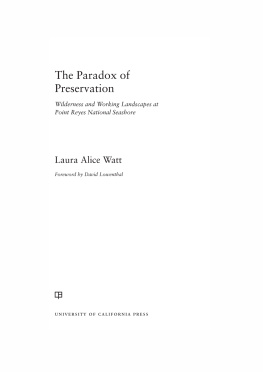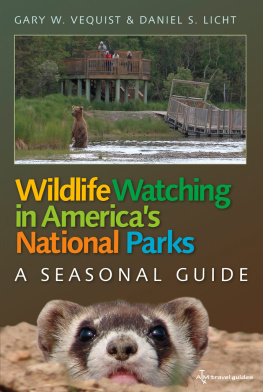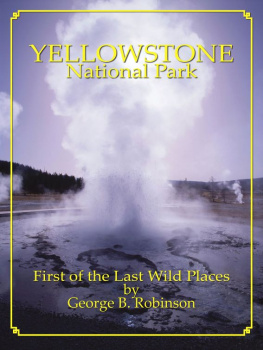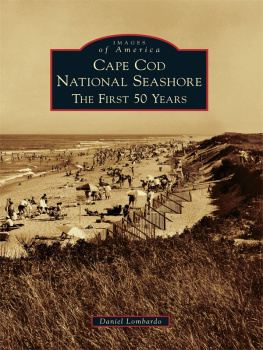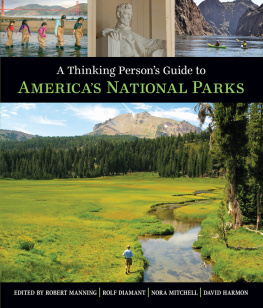The publisher gratefully acknowledges the generous contribution to this book provided by the Stephen Bechtel Fund.
The publisher gratefully acknowledges the generous contribution to this book provided by the International Community Foundation/JiJi Foundation Fund.
The Paradox of Preservation
Wilderness and Working Landscapes at Point Reyes National Seashore
Laura Alice Watt
Foreword by David Lowenthal

UNIVERSITY OF CALIFORNIA PRESS
University of California Press, one of the most distinguished university presses in the United States, enriches lives around the world by advancing scholarship in the humanities, social sciences, and natural sciences. Its activities are supported by the UC Press Foundation and by philanthropic contributions from individuals and institutions. For more information, visit www.ucpress.edu.
University of California Press
Oakland, California
2017 by The Regents of the University of California
Portions of the wilderness material in chapter 4 were published previously in two articles: The Trouble with Preservation, or, Getting Back to the Wrong Term for Wilderness Protection: A Case Study at Point Reyes National Seashore, Yearbook of the Association of Pacific Coast Geographers 64 (2002): 5572; and Losing Wildness for the Sake of Wilderness: The Removal of Drakes Bay Oyster Company, in Wildness: Relations of People and Place, eds. John Hausdoerffer and Gavin Van Horn (Chicago: University of Chicago Press, forthcoming Spring 2017). Portions of the elk material in chapter 6 were previously published in The Continually Managed Wild: Tule Elk at Point Reyes National Seashore, Journal of International Wildlife Law and Policy 18, no. 4 (2015): 289308.
All photographs are by the author unless otherwise stated. The chapter frontispieces were all taken using Polaroid peel-apart film, which represents a once-thriving photographic technology that has been abandoned not because it no longer worked, but because of a deliberate decision by the films makers to satisfy a different, more modern, market demand.
Library of Congress Cataloging-in-Publication Data
Names: Watt, Laura Alice, 1966 author. | Lowenthal, David, writer of foreword.
Title: The paradox of preservation : wilderness and working landscapes at Point Reyes National Seashore / Laura Alice Watt ; foreword by David Lowenthal.
Description: Oakland, California : University of California Press, [2017] | Includes bibliographical references and index. | Description based on print version record and CIP data provided by publisher; resource not viewed.
Identifiers: LCCN 2016019888 (print) | LCCN 2016018943 (ebook) | ISBN 9780520966420 (ebook) | ISBN 9780520277076 (cloth : alk. paper) | ISBN 9780520277083 (pbk. : alk. paper)
Subjects: LCSH : Point Reyes National Seashore (Calif.) | United States. National Park Service. | Natural resources conservation areasCaliforniaPoint Reyes PeninsulaManagement.
Classification: LCC F 868. P 9 (print) | LCC F 868. P 9 W 38 2017 (ebook) | DDC 979.4/62dc23
LC record available at https://lccn.loc.gov/2016019888
Manufactured in the United States of America
25 24 23 22 21 20 19 18 17 16
10 9 8 7 6 5 4 3 2 1
Dedicated to the ranching families of West Marinpast, present, and futurefor this is their story, not mine, just as it is most truly their landscape
Contents
Illustrations
MAPS
FIGURES
Foreword
Seldom does a books title so aptly fit its topic as does Laura Alice Watts vividly recounted and cogently crafted Paradox of Preservation. The checkered history of Point Reyes National Seashore exemplifies the manifold ironies of Americas love affair with wilderness, especially as deified by its preservationist patron champion, the U.S. National Park Service.
Culminating in the late nineteenth century, the cult of wilderness reversed long-standing American antipathy toward wild nature. Centuries of settlers and frontiersmen had viewed the wilderness with hostility, as a loathsome obstacle to be vanquished and domesticated into civilized productivity. Only as the far westward march of reconnaissance revealed unparalleled scenic splendors did concern for protecting the remaining remnants of apparently untrammeled nature begin to counter pressures for development. The ecstatic depictions of western explorers and the impassioned advocacy of John Muir persuaded millions that the awesome wonders of the national domain were an inspiration, not an impediment, to Americas Manifest Destiny. These divine scenic cathedralsnobler than any Old World merely human monumentspromised spiritual and physical renewal to care-worn entrepreneurs, a refreshing antidote to the hurly-burly of entrepreneurial striving. So was born the sentiment that led to the protection of Yosemite and Yellowstone, those early forerunners of the national parks.
But this wilderness could be properly enjoyed, as Watt stresses, only if seen to be perfectly wildthat is, devoid of economic activity and untenanted save by the occasional visitor. Hence her paradox: no part of the American landscape, however remote and seemingly inhospitable, had been devoid of Indian occupance for centuries if not for millennia. Indeed, it was in fact their presence that had shaped the landscapes now celebrated as pristine. But the mystique of solitude demanded their removal, along with that of other settlers in other parks treasured for wild solitude. Just as Indians were expelled as antithetic to, and desecrators of, the early western parks, so too were miners, loggers, ranchers, and farmers later evicted from protected areas. Only by banishing those who lived in and sought to make a living from the parks could their mundane working landscapes revert to the unsullied wilderness thought natural to them.
The trouble was that by expelling these inhabitants and banning their traditional modes of subsistence, wilderness stewards were not conserving but actually destroying the very landscapes and flora and fauna that visitors came to admire as untrammeled wilderness. Far from thriving in untouched virginity, much of what the public touted as wild required continual fructifying husbandry. And as even apparent wilderness became more and more scarce, demands for wilderness experience increased, worsening the dilemma. Hence the 1964 congressional Wilderness Act mandated not only protecting existing wilderness but making new wildernessfashioning a semblance of untouched nature where wilderness was wanted. This was best done by condemning existing human occupation and activity as ecologically and aesthetically deleterious, by acquiring public ownership of private properties, and by rendering ongoing nonconforming enterprise unsustainably hazardous. But the essential faith that drove such rewildingthe fantasy that locales stripped of human impress would revert to their previous supposed stable and unchanging natural characterwas profoundly ecologically misguided. In fact, it takes many human hands to make nature look as if no human hands had been at work. And the ensuing rewilding never restores what was ever previously there. Nor can human stewardship, once invoked either to keep or to invent a semblance of wilderness, ever be relaxed.
At the heart of Watts wonderful book is the saga, poignant, parlous, often perverse, of Point Reyes as a peopled landscape, and of its residents ongoing fractious engagement with the policies, threats, and promises of federal agencies and agents. Underlying all negotiations for public management is the drumbeat of progressive rewilding. Portions of the seascape, designated as potential wilderness in the 1970s to protect the tidelands from overdevelopment, are being stripped of all remnants of a nearly century-old oyster farm which was closed down for conversion to use only for recreation and wildlife. This transformation is authorized by a definition of wilderness so all-embracing, observed a congressional cynic, that New Yorks Wall Street might in time become not merely a financial but a physical wilderness. At Point Reyes, traces of prior usepower lines, paved roads, walls and fences, garden plants, exotic treesare to be expunged so that these long-farmed areas will appear primordially untouched. That many visitors commonly mistake the lonely grass-swept pastoral lands for wilderness cuts no ice with some wilderness purists who anathematize the ranches as excrescences of human make that do not belong in a natural national park.

